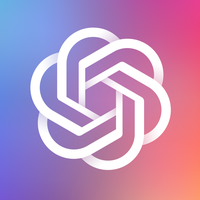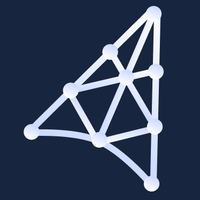The Rise of Vibe Coding and the Emergence of DeepSeek R-1
February 3, 2025, 11:20 pm

Location: United States, California, San Francisco
Employees: 201-500
Founded date: 2015
Total raised: $58.21B

Location: United States, California, San Francisco
Employees: 11-50
Founded date: 2017
Total raised: $2M
In the fast-paced world of technology, new concepts emerge like wildflowers in spring. One such bloom is "vibe coding," a term coined by Andrey Karpathy, a prominent figure in artificial intelligence. This innovative approach to programming is not just a trend; it’s a glimpse into the future of how we interact with code.
Karpathy, co-founder of OpenAI and former director of AI at Tesla, describes vibe coding as a state of flow. It’s where the programmer becomes one with the code, letting intuition guide their hands. Forget the keyboard; it’s all about the vibrations. With the rise of large language models (LLMs), coding has transformed from a meticulous task into a more fluid experience. Karpathy's method involves speaking commands to AI, reducing the need for traditional coding practices. He casually asks for adjustments, like shrinking a sidebar, and the AI responds. It’s a dance of collaboration between human and machine.
Imagine coding as a conversation. You express an idea, and the AI brings it to life. This is the essence of vibe coding. It’s not about the lines of code; it’s about the interaction. The AI becomes a partner, understanding context and intent. This shift could redefine programming, making it accessible to those who may not have traditional coding skills.
But what does this mean for the future? As vibe coding gains traction, it raises questions about the role of programmers. Will coding become an art form, where creativity takes precedence over technical skill? Or will it lead to a new breed of developers who blend intuition with technology? The answers remain to be seen, but one thing is clear: the landscape of programming is changing.
In parallel, the introduction of DeepSeek R-1 into the Cursor AI ecosystem adds another layer to this evolving narrative. Developed by the Chinese AI lab DeepSeek, this model is a game-changer. It’s an open-source tool that allows developers to modify and adapt the code to their needs. This flexibility is crucial in a world where customization is king.
DeepSeek R-1 excels in reasoning tasks, making it a formidable competitor in the AI landscape. It has shown promising results in benchmarks, performing well in mathematical reasoning and competitive programming. This model started as a side project, a testament to the power of innovation born from necessity. It’s a reminder that great things can emerge from humble beginnings.
The integration of DeepSeek R-1 into Cursor AI signifies a shift in how developers approach problem-solving. It’s not just about writing code; it’s about leveraging AI to enhance creativity and efficiency. The model’s ability to understand context and provide relevant suggestions makes it a valuable asset for developers. However, it’s not without limitations. While it shines in single-file tasks, it struggles with multi-file projects, where maintaining context becomes a challenge.
This is where the competition heats up. DeepSeek R-1 offers a cost-effective solution for developers. Its pricing model is significantly lower than that of its competitors, making it an attractive option for those on a budget. In a world where every dollar counts, this affordability could disrupt the market. As more developers explore DeepSeek R-1, it may force established players like OpenAI and Anthropic to reconsider their pricing strategies.
The landscape of AI programming tools is becoming increasingly competitive. With the introduction of models like DeepSeek R-1, developers have more choices than ever. This variety fosters innovation and pushes companies to improve their offerings. The race is on, and the stakes are high.
As vibe coding and tools like DeepSeek R-1 gain popularity, the future of programming looks bright. The barriers to entry are lowering, allowing more people to engage with technology. This democratization of coding could lead to a surge in creativity and innovation. Imagine a world where anyone can bring their ideas to life, regardless of their technical background.
However, this shift also brings challenges. As programming becomes more intuitive, the need for traditional coding skills may diminish. This could lead to a skills gap in the industry, where those who excel in traditional programming may find themselves at a disadvantage. The balance between creativity and technical proficiency will be crucial.
In conclusion, the rise of vibe coding and the emergence of DeepSeek R-1 mark a significant turning point in the world of programming. These developments are not just trends; they represent a fundamental shift in how we interact with technology. As we embrace these changes, we must also consider the implications for the future of coding. Will we see a new generation of developers who blend creativity with technology? Only time will tell. But one thing is certain: the future of programming is here, and it’s more exciting than ever.
Karpathy, co-founder of OpenAI and former director of AI at Tesla, describes vibe coding as a state of flow. It’s where the programmer becomes one with the code, letting intuition guide their hands. Forget the keyboard; it’s all about the vibrations. With the rise of large language models (LLMs), coding has transformed from a meticulous task into a more fluid experience. Karpathy's method involves speaking commands to AI, reducing the need for traditional coding practices. He casually asks for adjustments, like shrinking a sidebar, and the AI responds. It’s a dance of collaboration between human and machine.
Imagine coding as a conversation. You express an idea, and the AI brings it to life. This is the essence of vibe coding. It’s not about the lines of code; it’s about the interaction. The AI becomes a partner, understanding context and intent. This shift could redefine programming, making it accessible to those who may not have traditional coding skills.
But what does this mean for the future? As vibe coding gains traction, it raises questions about the role of programmers. Will coding become an art form, where creativity takes precedence over technical skill? Or will it lead to a new breed of developers who blend intuition with technology? The answers remain to be seen, but one thing is clear: the landscape of programming is changing.
In parallel, the introduction of DeepSeek R-1 into the Cursor AI ecosystem adds another layer to this evolving narrative. Developed by the Chinese AI lab DeepSeek, this model is a game-changer. It’s an open-source tool that allows developers to modify and adapt the code to their needs. This flexibility is crucial in a world where customization is king.
DeepSeek R-1 excels in reasoning tasks, making it a formidable competitor in the AI landscape. It has shown promising results in benchmarks, performing well in mathematical reasoning and competitive programming. This model started as a side project, a testament to the power of innovation born from necessity. It’s a reminder that great things can emerge from humble beginnings.
The integration of DeepSeek R-1 into Cursor AI signifies a shift in how developers approach problem-solving. It’s not just about writing code; it’s about leveraging AI to enhance creativity and efficiency. The model’s ability to understand context and provide relevant suggestions makes it a valuable asset for developers. However, it’s not without limitations. While it shines in single-file tasks, it struggles with multi-file projects, where maintaining context becomes a challenge.
This is where the competition heats up. DeepSeek R-1 offers a cost-effective solution for developers. Its pricing model is significantly lower than that of its competitors, making it an attractive option for those on a budget. In a world where every dollar counts, this affordability could disrupt the market. As more developers explore DeepSeek R-1, it may force established players like OpenAI and Anthropic to reconsider their pricing strategies.
The landscape of AI programming tools is becoming increasingly competitive. With the introduction of models like DeepSeek R-1, developers have more choices than ever. This variety fosters innovation and pushes companies to improve their offerings. The race is on, and the stakes are high.
As vibe coding and tools like DeepSeek R-1 gain popularity, the future of programming looks bright. The barriers to entry are lowering, allowing more people to engage with technology. This democratization of coding could lead to a surge in creativity and innovation. Imagine a world where anyone can bring their ideas to life, regardless of their technical background.
However, this shift also brings challenges. As programming becomes more intuitive, the need for traditional coding skills may diminish. This could lead to a skills gap in the industry, where those who excel in traditional programming may find themselves at a disadvantage. The balance between creativity and technical proficiency will be crucial.
In conclusion, the rise of vibe coding and the emergence of DeepSeek R-1 mark a significant turning point in the world of programming. These developments are not just trends; they represent a fundamental shift in how we interact with technology. As we embrace these changes, we must also consider the implications for the future of coding. Will we see a new generation of developers who blend creativity with technology? Only time will tell. But one thing is certain: the future of programming is here, and it’s more exciting than ever.